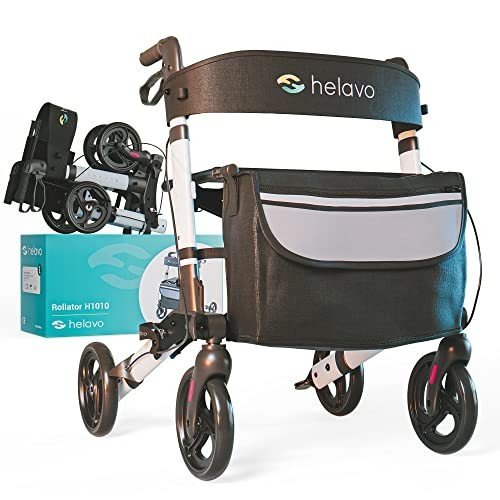
Bariatric Rollator
Add a review FollowOverview
-
Sectors General Surgery
-
Posted Jobs 0
-
Viewed 9
Company Description
The 10 Most Terrifying Things About Medical Walker
Understanding Medical Walkers: A Comprehensive Guide
Medical walkers function as vital mobility aids for individuals recuperating from surgery, managing persistent health problems, or handling age-related mobility problems. These gadgets not only improve physical independence but likewise improve safety, allowing users to browse their environments with greater ease. This short article checks out the types, benefits, features, and considerations associated with medical walkers, along with some often asked questions.
Table of Contents
- Types of Medical Walkers
- Benefits of Using a Medical Walker
- Key Features to Consider
- Often Asked Questions
- Conclusion
1. Types of Medical Walkers
Medical walkers are readily available in different styles, dealing with various requirements and choices. The primary types consist of:
| Type of Walker | Description |
|---|---|
| Standard Walker | A rectangular frame with 4 legs, providing stability and support. |
| Two-Wheeled Walker | Similar to a basic walker but geared up with wheels at the front for simpler motion. |
| Three-Wheeled Walker | A lightweight walker with three wheels, permitting more maneuverability, suitable for indoor use. |
| Rollator Walker | A walker with four wheels, hand brakes, and a seat, appropriate for longer distances and resting requirements. |
| Hemi Walker | Created for people who can use only one hand, including a tripod-like design. |
2. Benefits of Using a Medical Walker
Utilizing a medical walker presents numerous benefits that contribute to the user’s general well-being, consisting of:
- Increased Stability: Walkers provide a steady base of assistance, lowering the risk of falls.
- Improved Mobility: They enable users to walk around more quickly, promoting self-reliance.
- Pain Relief: By rearranging weight, walkers can minimize pain in the joints, particularly in the hips and knees.
- Posture Support: These gadgets motivate correct posture, reducing stress on the back.
- Improved Confidence: Users frequently feel more safe utilizing walkers, resulting in much better self-esteem and increased activity levels.
3. Secret Features to Consider
When picking a medical walker, it’s important to evaluate various functions to find the right fit. Here are some important elements to consider:
- Weight Capacity: Ensure the walker can support the user’s weight while keeping stability.
- Height Adjustment: Look for a walker with adjustable height settings to accommodate the user’s height and offer comfortable grip.
- Material: Lightweight aluminum walkers are simpler to maneuver, while steel walkers offer more powerful support but might be much heavier.
- Wheel Quality: If selecting a wheeled walker, consider the wheel size and tread. Bigger wheels navigate irregular surface areas more quickly.
- Seat Availability: If users will be walking for longer durations, a walker with an integrated seat can supply rest breaks when needed.
- Brakes: Hand brakes are particularly essential for safety in rollator walkers to control speed and stop when needed.
Types of Walkers with Features Comparison Table
| Walker Type | Weight Capacity | Height Adjustment | Wheels | Seat Available | Brakes |
|---|---|---|---|---|---|
| Requirement Walker | As much as 300 lbs | Yes | No | No | No |
| Two-Wheeled Walker | Approximately 300 lbs | Yes | Yes | No | No |
| Three-Wheeled Walker | Up to 250 lbs | Yes | Yes | No | No |
| Rollator Walker | Up to 400 lbs | Yes | Yes | Yes | Yes |
| Hemi Walker | Up to 250 pounds | Yes | No | No | No |
4. Frequently Asked Questions
Q1: Who should use a medical walker?A: Medical walkers are advantageous for individuals recuperating from surgical treatment, experiencing balance issues, or requiring assistance due to age-related mobility difficulties. Q2: Can a medical walker be adjusted?A: Yes, many
medical walkers are height-adjustable to accommodate various user heights, permitting a more comfy grip. Q3: How do I choose the ideal walker for my needs?A: Consider factors such as the
user’s weight, height, type of mobility concerns, and whether they require a seat or brakes. Checking the walker for convenience and stability before purchase is likewise advisable. Q4: Are there any safety tips related to using a medical walker?A: Yes, users must guarantee they do not lean too
greatly on the walker, use it on steady and level surface areas, and always ensure
the brakes are engaged when seated or stationary. Q5: Can walking with a medical walker assist with rehabilitation?A: Absolutely. Medical walkers are typically recommended as part of rehab programs as they motivate
exercise, which aids in recovery and mobility improvement. 5.
Conclusion Medical walkers play a vital function in boosting the quality of life for individuals dealing with mobility difficulties. With various types and features readily available, picking the right walker includes thinking about the user’s specific needs and circumstances. By comprehending their benefits and proper use, individuals can gain back self-reliance, improve their mobility, and browse their environments securely. Whether for short-term recovery or long-term assistance, the best medical walker can considerably enhance a user’s general well-being. Incorporating a medical walker into one’s daily routine can be a transformative choice, making it much easier to participate in life’s day-to-day activities while ensuring safety and confidence.
